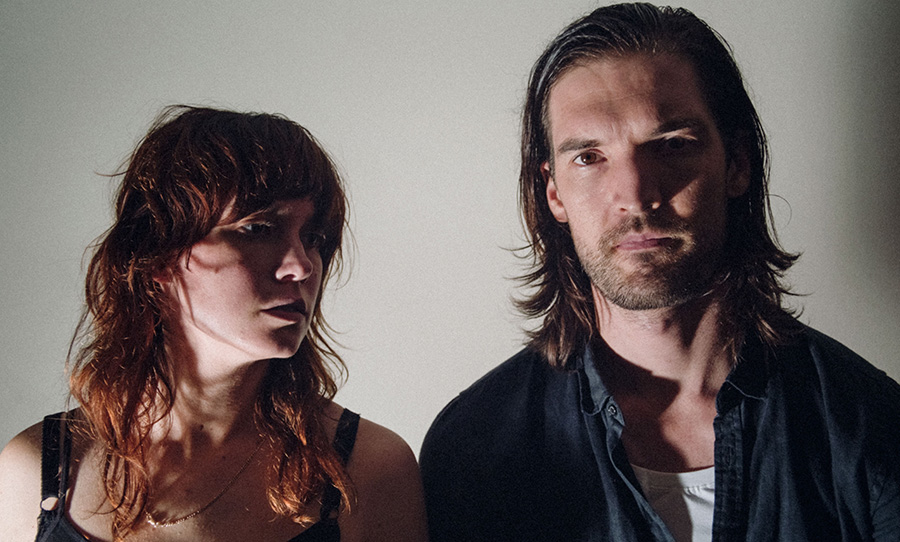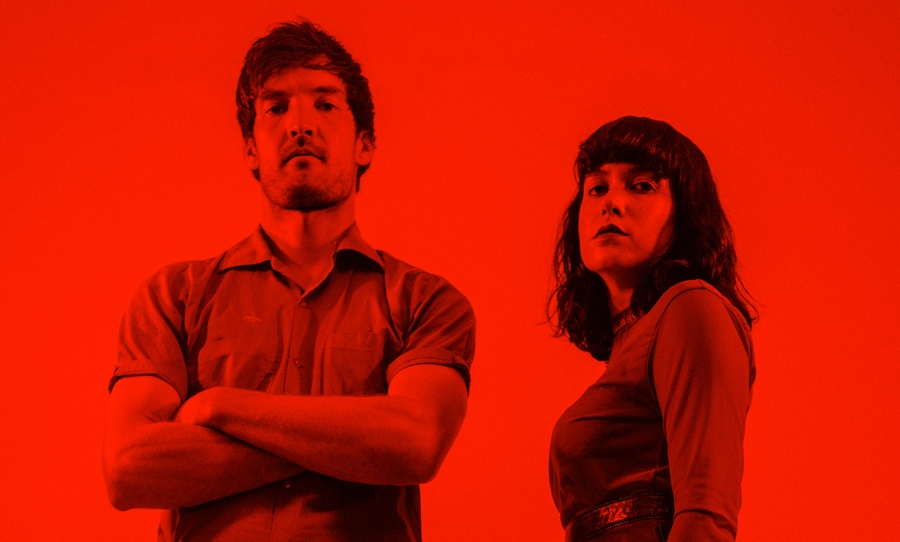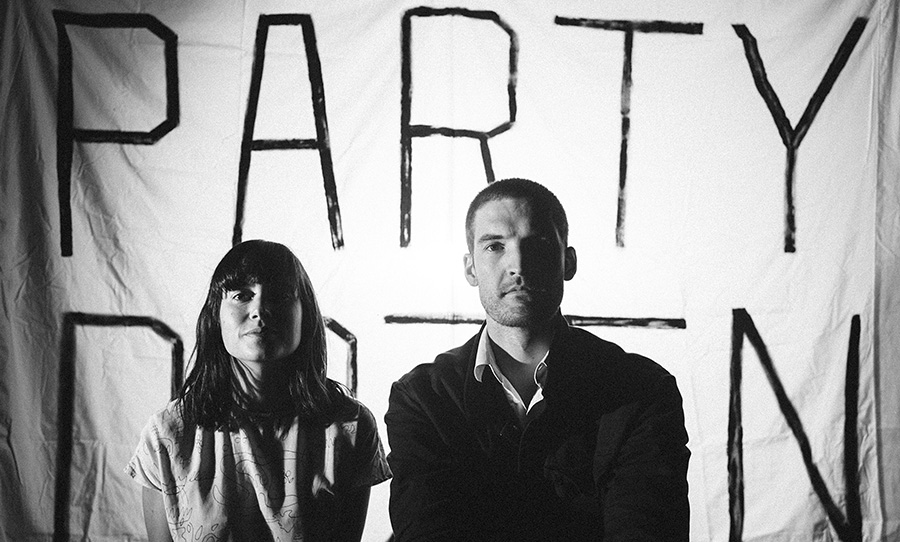“For extreme diseases, extreme methods of cure are most suitable.” What, then, is a suitable cure for the vicious disease currently ravaging our planet? I refer not to the coronavirus, mind you, but to the fear; the panic; the anxiety! Look around yourself! It’s everywhere! With each passing moment, it’s pushed, dirt-like, into your ears and eyes!
If you, like your peers, are searching desperately for salvation, look no further! For today you, dear friend, have happened upon your escape. The cult of Party Dozen welcomes you lovingly with warm, open arms.
Before the group unleash next musical offering, Pray For Party Dozen, unto the world, we spoke to one-half of one of Sydney’s most extreme bands about the making of their new record, life in lockdown, and their DIY manifesto.
“Party Dozen is the most original thing I’ve ever done, so it’s also the most satisfying”: Jonathan Boulet chats Party Dozen’s cultish second album.
HAPPY: What have you been up to in iso? Any new hobbies?
JONATHAN: I’m kind of just doing the same things that I’ve always done. I spend a lot of time closed off from the world doing music stuff at home or at the studio, or getting distracted with other things. I’ve refound all the bits to the first drum kit I ever owned. It got spread around all my friends in bits, so I’ve been putting it back together. So yeah, I’ve been doing a bunch of useless shit that’s not going to achieve anything, but it keeps my brain occupied.
HAPPY: Everything we were doing pre-lockdown, we’re still doing now.
JONATHAN: Yeah, pretty much. I just feel a bit less guilty about it now.
HAPPY: Well, congrats on getting the new album done! I was listening to it today, I think it’s brilliant.
JONATHAN: Thank you very much.
HAPPY: There have been lots of artists postponing the release of albums lately. Was that ever a consideration for you guys?
JONATHAN: Not really, no. It’s been done since last year, so we just wanted to get it out. We’ve moved the shows back. If anything, it gives people a bit more time to take it all on board. Hopefully, more people will be interested by the time the shows roll around. Or maybe it’ll be the exact opposite of that, but that’s my line of thinking.

HAPPY: When did you finish the record?
JONATHAN: It’s been a very long process. I think we finished tracking it last September, then it took a couple of months to mix it, and then getting all the records pressed and organising promo takes ages too. So yeah, it’s been a while. It always feels like way too long between finishing a record and when it comes out.
HAPPY: When did you start it? Did you launch in straight after The Living Man came out or did you take a break?
JONATHAN: Yeah, we’re always writing stuff. That’s always been our take on it. It’s all very jammy, so we like to spread it out. If we went into the studio and did it all in two days, I think it’d all sound really similar. Your brain goes to different spaces at different times in your life. So spreading it out means that each track will be different from the last one. Looking back, I can’t even remember recording some of them.
HAPPY: I’ve been interested in how that improvisational way of making music feeds into the creation of an album. Because you improvise mostly over a series of loops, correct?
JONATHAN: Yep.
HAPPY: Do you purposefully tell yourself that you’re only going to finalise a certain number of songs within a particular timeframe?
JONATHAN: Generally, with this stuff, you can’t listen to it for very long. I like to think of it in terms of colours. We want as many colours as we can have on a record. If you can condense that to ten or so tracks, there’s enough space to be different but it’s also not too short.
HAPPY: In the middle of the new record, it feels a lot more melodic. Auto Loser and Dead Friends, in particular, feel quite different to anything I’ve heard from you guys before. Were they written in close succession?
JONATHAN: Hmm, I can’t remember if those were close together. But I remember playing a lot of new stuff live. Because in the live show you can roadtest stuff to get a feel for how it’s going to fit on a record. The shows, up until that point, we all really go-go-go. We were trying to be the loudest, fastest, craziest band. That’s all fun, but there’s a limit to where you can take it. You’ve got to be able to take it all down before it can come back up. So we were thinking a lot about that. We were trying to push the dynamics louder and softer without it being boring.
HAPPY: When you are introducing new sounds, how does that process work for you? Is it a result of improvisation, or do you sit down with Kirsty and think about what kind of sounds you want to introduce?
JONATHAN: Yeah, it’s usually a bit of both. We normally look at the record and say “there’s not enough of this” or “there’s not enough of that”. We try to describe a feeling, then try to pin it down with a sound. Other times, we’ll just be recording loops willy-nilly, just trying new stuff, and something will pop out. We never really do the same thing twice, which keeps it really interesting and fun.
HAPPY: With the album, then, did a lot of those new sounds come from a place of trying to diversify the live show? Or did you also consciously want to have distinct sounds in the album?
JONATHAN: I think with the record, we were focusing more on the record. We wanted to make it a touch more listenable than the last one, while still experimenting.

HAPPY: When you sat down and decided you wanted to make the record more listenable, what kinds of sounds did you consciously decide to bring into the fold?
JONATHAN: I think we just wanted to push it in all directions. We wanted to spread it out further. We wanted to explore all avenues. We tried really loud stuff and really quiet stuff, then from that, we found a nice grouping of things. But that makes it harder to sequence the record, because you’ve got opposite ends of the spectrum. It’s hard to go from some hectic noise song into something really tender.
HAPPY: Were there any specific genres you wanted to weave through? Or was it more just a case of dynamics?
JONATHAN: Hmm, yeah I think it was more about vibes than genres. If something made us feel a certain way, we’d go with that. You can say what it reminds you of after you make it, but at the time we’re not really thinking about genre. We never say “let’s make a metal song” or “let’s make a jazz song”, it just kind of comes out, then you can stick your connotations on.
HAPPY: Looking at your career, I feel like you’ve always pushed further and further into more abrasive sounds. Going from We Keep The Beat to Gubba to Party Dozen and ARSE, it feels like everything you do takes another step in that direction. Do you feel like that’s an accurate portrayal of the trajectory of your career?
JONATHAN: I guess so. When I started out, I was in another band with the ARSE guys called Snakeface. That was a pretty heavy punk band. So that part of my musical life was always there, it was just never at the forefront because the other stuff took over. And that’s the thing… that other stuff was always so fun to play, I always wanted to incorporate that into my other music. So it was like I was just going down this funnel, and the all the music I was into was kind of pushing together slowly until now. So now, it’s all meshed together into this weird fuckstorm of punk and ridiculous stuff.
HAPPY: So all roads have led to Party Dozen?
JONATHAN: For me, yes. As a music person, you’re always seeking a new sound. Everyone’s always going to be influenced by someone else, but if you can find a sound that’s vaguely your own, that’s the feeling everyone’s trying to find. Party Dozen is the most original thing I’ve ever done, so it’s also the most satisfying.

HAPPY: I’m curious then, what do you think happened with Kirsty? I may have missed projects of hers over the years, but from everything I’ve heard, Party Dozen sounds a world apart. Did something just snap one day?
JONATHAN: Yeah, well when we first started, I encouraged Kirsty to look at pedals. We wanted to start a noisy band, even though we didn’t know what we wanted it to be. Kirsty has a history with clarinet and saxophone, and we saw a band years ago that ran their brass instruments through these high-gain amps. It was amazing. It clicked for me that you can actually do that. You can put a brass instrument into a different context and it works. So we decided to run the saxophone through some pedals. It blossomed from there. Now we’ve got pedalboards that are too big and saxophones that don’t sound like saxophones.
HAPPY: You guys first started jamming together in Berlin while you were touring your solo stuff, right?
JONATHAN: I think the conception of the idea happened in Berlin, but we weren’t really ingrained in the scene there, so we couldn’t really play many shows. Then we moved to London, and that’s when we started jamming together.
HAPPY: What did those early jams look like?
JONATHAN: We had a couple of pedals… there wasn’t too much action. There was some delay and distortion. I think we tried a few sessions where we swapped instruments. I hopped on sax and Kirsty was on the drums, and it was hilarious. It was really stupid. We thought “maybe this can be a band,” and we were just going to play really fucked-up, simple, dumb music. But we switched back and decided that made more sense. I think we started off without any loops either. We just tried to make a whole heap of noise between the two of us. It was cool but adding loops took it to a whole different level. We can have so many flavours at the touch of a button, and we don’t have to set anything up. We don’t have to worry about recreating loops live, we can just jump from vibe to vibe.
HAPPY: I read that the initial move to Berlin was, at least partly, because of some discontentment with the Australian music scene. Do you still feel that way?
JONATHAN: Yeah, I don’t know. I think the Australian music scene is always going to be kind of small, because it’s a small country. It still leaves a lot to be desired. But at the same time, it’s the same situation no matter where you go in the world. There are always little pockets of creativity. There’s always a cloud of mediocrity that those pockets live in. Sometimes you can see them, and sometimes you can’t because there’s too much shit. At first, I thought there was more to be had outside of Australia. But now I feel like you’ve just got to know where to look. Stuff pops up all the time in unexpected places.
HAPPY: Any current examples of these pockets in Australia?
JONATHAN: There’s this little Sydney punk scene that’s popped up. Bands like Research Reactor Corp and RMFC. There’s an Ipswitch band called Pious Faults, there’s a band from Perth called Cold Meat. They’re just these really fun punk bands. It’s really hard to find these bands though…
HAPPY: It’s all through Hirakiri Diat. That’s all we’ve got.
JONATHAN: Totally! That’s a big one. I love when that stuff pops up because you can go there and you’ll always find something good. I still don’t know who that is. It’s just some weird, mythological punk character.
HAPPY: Finally, the new album was inspired a fair bit by cults. Could you tell us a bit about the cult of Party Dozen? What’s your manifesto?
JONATHAN: The manifesto is very BYO and DIY. We’re not too serious about this band, we just like to have a good time. But it’s funny to us, relating to this culty aesthetic. It makes it more interesting to us. But our cult is pretty open, you can kind of do whatever you want. There are no rules, just don’t be a dick.
Pray For Party Dozen is out May 22nd via Grupo Records. Pre-order’s are available here.
Party Dozen will be performing as part of Happy Mag’s Pyjama Jam on Friday, May 15th. More info here.
They’ll also be performing real-life gigs later in the year. Dates below:
November 19th – The Lansdowne, SYDNEY NSW
November 20th – The Grace Darling, MELBOURNE VIC
November 21st – The Bearded Lady, BRISBANE QLD



